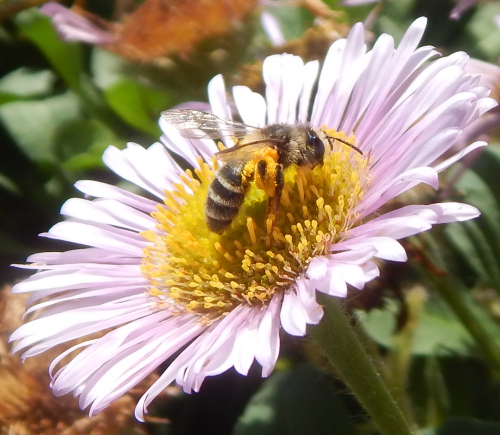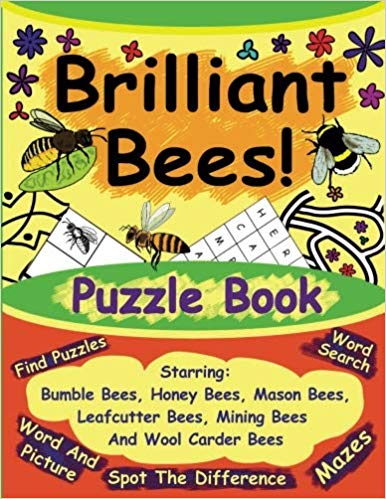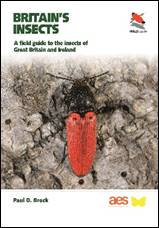Grey banded mining bee - Andrena denticulata
I was really pleased to snap the photograph below of a female Andrena denticulata - the grey-banded mining bee.
The grey-banded mining bee is attracted to composite flowers, and is therefore usually seen around composite rich habitats.
'Composite rich' is probably a reasonable description of my garden. For a start, we have a very large area of beach aster - Erigeron glaucus. It not only occupies a large area of our front garden, it has also made it's way into next door's patch, and they seem quite happy about that.

At the rear of our house, we have a further patch of beach aster, and rather a lot of daisies of various types.
A few dandelions also peep up from time to time, and are common along the country lane, just a few yards from where I live.
On top of this, on offer to the bees are the flowers in neighbouring gardens, and the many wildflowers down the country lanes, wooded valley and nearby brownfield site, which is now home to many wildflower species.
Habitat And Flower Preferences Of Grey-banded Mining Bees
This species is fairly wide-spread, probably because it will forage from a range of abundant flower species, and not merely the composites described.
They may be seen in gardens (as in the case spotted here), brownfield sites, heathland, coastal dunes and chalk downland.
Knapweed and ragworts are among the many flowers visited by grey-banded mining bees, both of which grow in abundance in my local area, along with with various species of thistle, which are also popular with Andrena denticulata.
According to Falk, nesting occurs in sparsely vegetated, sand ground, and nests may occur singly or in loose aggregations.
Appearance
The female measures up to about 8.5mm, with the males resemble the females, though they are a little smaller and slimmer, measuring up to 7.5mm.
Flight season
Look out for this species from June to September.
Parasites
It is thought that Andrena denticulata is a target of the nomad bee, Nomada rufipes.
Mining bees...
- The Ashy Mining Bee - Andrena cineraria Identification, photos, habitat and nesting habits, parasites and flowers visited by this lovely bee.
- Painted mining bee - Andrena fucata - A medium-sized mining bee, with females around 9mm long, and males a little smaller. They are univoltine.
- The Chocolate Mining Bee - Andrena carantonica/scotica Images of 2 Chocolate mining bees mating, plus their habitats, nesting and foraging preferences.
- Grey-patched mining bee - Andrena nitida Images and description.
- Orange-tailed Mining Bee - Andrena haemorrhoa About the Orange-tailed Mining Bee: photos, habitat, foraging habits. Look out for the bright orangey hairs on the tip of the tail.
If you found this page helpful or interesting, I'd really be grateful if you would share it with others - if not this page, perhaps another, such as Gardening For Bees.
Thank you so much :) .

